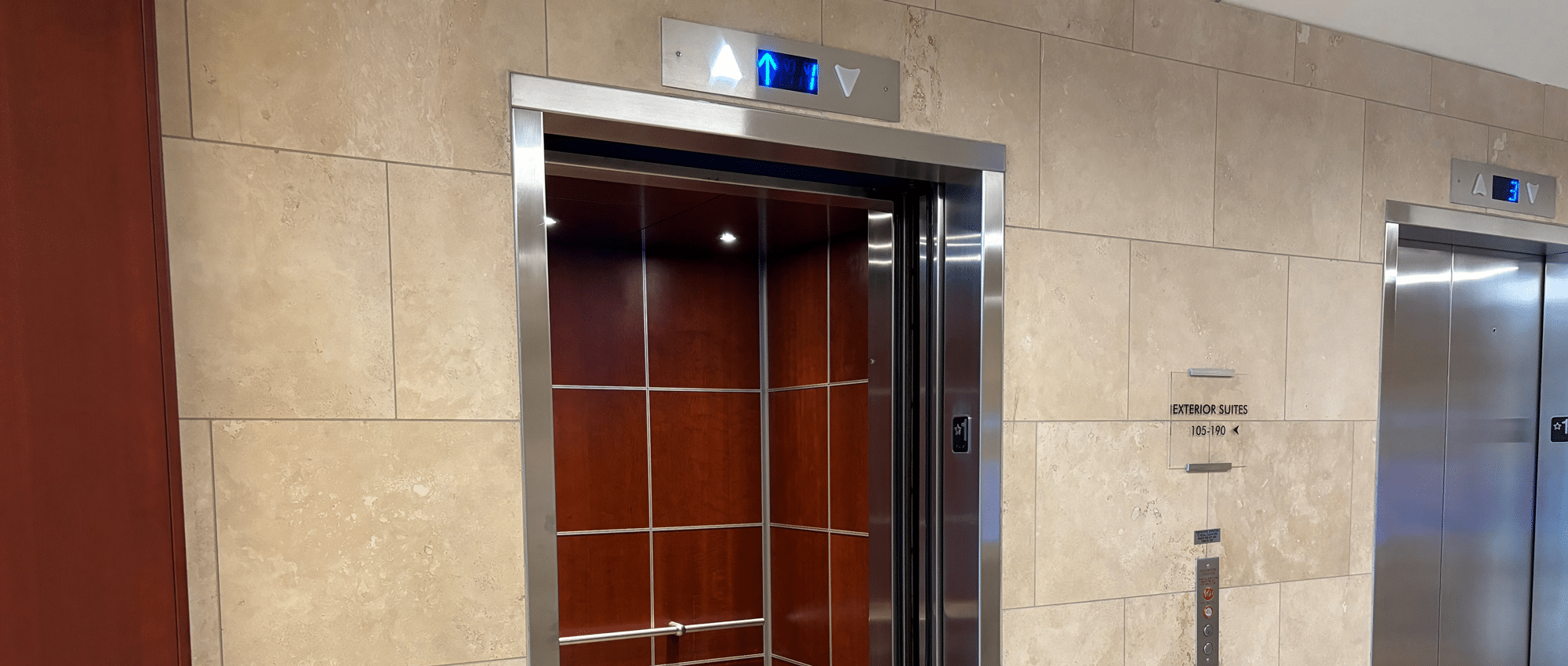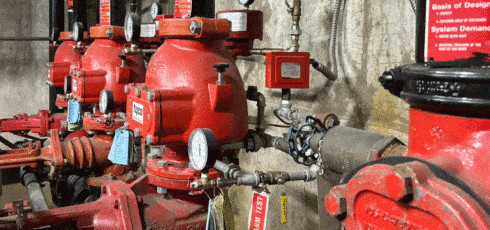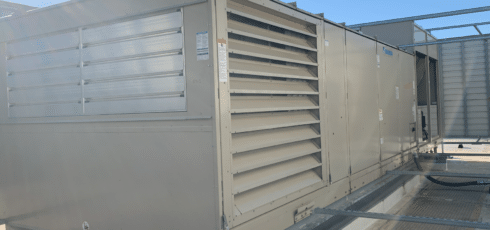Elevators are a crucial component of any multi-story commercial property, ensuring the efficient transportation of people and goods. Understanding the various types of elevator systems and their unique characteristics is essential for building owners. This will help you make informed decisions about installation, maintenance, and management.
Read Next: What Are the Different Types of HVAC Systems for Commercial Buildings?
This article will explore the most common types of elevator systems found in commercial properties as well as their advantages and disadvantages.
Types of Elevators for Commercial Properties
Traction Elevators
Traction elevators are the most common type of elevator system found in commercial properties. They use a system of belts and cables (wire rope) and a counterweight to move the elevator car up and down. Traction elevators offer a smooth ride and high reliability but require a dedicated machine room, which can take up valuable space in a building.
Read Next: 34 Commercial Property Management Terms You Should Know (Glossary with Definitions)
Here are some details about traction elevators:
- Maintenance: Monthly, includes checking wire rope, sheaves, and brakes
- Safety: Equipped with brakes, speed governors, and safety gears
- Inspections: Annually, as required by local building codes
- Breakdowns: Typically repaired within a few hours
- Modernization: Every 20 to 25 years, benefits include improved reliability and energy efficiency
- Capacity: Can handle high occupancy and traffic
- Speed: Can be adjusted, but may require system upgrades
- Energy Efficiency: Regenerative drives can reduce energy consumption
- Aesthetics: Can be upgraded with new cab interiors and fixtures
- Accessibility: Must meet ADA requirements
- Emergencies: Battery-powered lowering and emergency communications
- Noise: Can be reduced with proper maintenance and isolation
- Service contracts: Full-service contracts cover most maintenance and repairs
Hydraulic Elevators
Hydraulic elevators rely on a hydraulic piston to push the elevator car up and down. They are commonly used in low-rise commercial properties, typically up to six stories. There are two main types of hydraulic elevators: conventional and hole-less.
Read Next: Cost to Hire a Commercial Property Management Company in Austin, TX (Fees/Rates)
Conventional hydraulic elevators require a deep pit for the piston, while hole-less elevators use a telescopic piston that eliminates the need for a deep pit. Hydraulic elevators are known for their durability and low initial cost but can be slower and less energy-efficient compared to traction elevators.
Here are some details about hydraulic elevators:
- Maintenance: Monthly, includes checking hydraulic fluid and seals
- Safety: Equipped with pressure relief valves and rupture valves
- Inspections: Annually, as required by local building codes
- Breakdowns: Typically repaired within a day
- Modernization: Every 15 to 20 years, benefits include improved reliability and energy efficiency
- Capacity: Better suited for low to mid-rise buildings with moderate traffic
- Speed: Limited by the hydraulic system, typically slower than traction elevators
- Energy Efficiency: Less efficient than traction elevators
- Aesthetics: Can be upgraded with new cab interiors and fixtures
- Accessibility: Must meet ADA requirements
- Emergencies: Manual lowering and emergency communications
- Noise: Can be reduced with proper maintenance and isolation
- Service contracts: Full-service contracts cover most maintenance and repairs
Machine Room-Less (MRL) Elevators
MRL elevators are a more recent innovation in elevator technology. They use a compact electric motor and control system that is mounted directly in the elevator shaft, eliminating the need for a separate machine room. This space-saving design makes MRL elevators ideal for properties with limited space or those looking to maximize their usable area. MRL elevators offer a smooth, quiet ride and are energy-efficient, but they may have a higher initial cost compared to traditional traction elevators.
Read Next: 5 Benefits of Using a Property Management Company to Manage Your Office Building
Here are some details about MRL elevators:
- Maintenance: Monthly, includes checking ropes, sheaves, and brakes.
- Safety: Equipped with brakes, speed governors, and safety gears.
- Inspections: Annually, as required by local building codes.
- Breakdowns: Typically repaired within a few hours.
- Modernization: Every 20 to 25 years, benefits include improved reliability and energy efficiency.
- Capacity: Can handle high occupancy and traffic.
- Speed: Can be adjusted, but may require system upgrades.
- Energy Efficiency: More efficient than traditional traction elevators.
- Aesthetics: Can be upgraded with new cab interiors and fixtures.
- Accessibility: Must meet ADA requirements.
- Emergencies: Battery-powered lowering and emergency communications.
- Noise: Can be reduced with proper maintenance and isolation.
- Service contracts: Full-service contracts cover most maintenance and repairs.
Pneumatic Elevators
Pneumatic elevators, also known as vacuum elevators, use air pressure to move the elevator car. They are best suited for low-rise residential and small commercial properties, typically up to three or four stories.
Read Next: An In-Depth Look at Commercial Building Fire Protection Systems
Pneumatic elevators are compact, energy-efficient, and do not require a machine room or pit, making them an attractive option for properties with limited space. However, they have a lower weight capacity and slower speeds compared to other elevator types.
Here are some details about pneumatic elevators:
- Maintenance: Monthly, includes checking air compressors and seals
- Safety: Equipped with pressure relief valves and safety brakes
- Inspections: Annually, as required by local building codes
- Breakdowns: Typically repaired within a day
- Modernization: Every 15 to 20 years, benefits include improved reliability and energy efficiency
- Capacity: Limited capacity, better suited for low-rise buildings with low traffic
- Speed: Typically slower than other elevator types
- Energy Efficiency: Less efficient than traction and MRL elevators
- Aesthetics: Can be upgraded with new cab interiors and fixtures
- Accessibility: Must meet ADA requirements
- Emergencies: Manual lowering and emergency communications
- Noise: Can be reduced with proper maintenance and isolation
- Service contracts: Full-service contracts cover most maintenance and repairs
Freight Elevators
Freight elevators are designed for the transportation of goods and materials rather than passengers. They come in various sizes and configurations to accommodate different types of cargo, such as pallets, crates, and machinery.
Read Next: How to Choose the Right Commercial Property Management Company
Freight elevators can be traction or hydraulic, depending on the building’s height and the required load capacity. When planning for a freight elevator, you must consider factors such as load capacity, door size, and floor layout to ensure the system meets the property’s specific needs.
Here are some details about freight elevators:
- Maintenance: Monthly, includes checking ropes, sheaves, and brakes
- Safety: Equipped with brakes, speed governors, safety gears, and vertical bi-parting doors
- Inspections: Annually, as required by local building codes
- Breakdowns: Typically repaired within a few hours to a day, depending on the issue
- Modernization: Every 20 to 25 years, benefits include improved reliability and energy efficiency
- Capacity: Designed for heavy loads and large items
- Speed: Typically slower than passenger elevators
- Energy efficiency: Less efficient than passenger elevators due to heavier loads
- Aesthetics: Functional design, can be upgraded with new cab interiors and fixtures
- Accessibility: Must meet ADA requirements if used for passenger service
- Emergencies: Battery-powered lowering and emergency communications
- Noise: Can be reduced with proper maintenance and isolation
- Service contracts: Full-service contracts cover most maintenance and repairs
Elevator Maintenance and Safety
Regular maintenance is essential for ensuring the safe and reliable operation of any elevator system. Building engineers play a critical role in overseeing elevator maintenance, including scheduling inspections, managing repairs, and ensuring compliance with local and national safety regulations.
Modern elevator systems come equipped with various safety features, such as emergency brakes, door sensors, and communication systems, which help prevent accidents and ensure passenger safety. Building engineers must stay up-to-date with the latest safety standards and technologies to maintain a safe and efficient elevator system.
Read Next: Deferred Maintenance in Commercial Property Management: The Snowball Effect
Conclusion
Elevators are a vital component of any multi-story commercial property, and understanding the different types of elevator systems is crucial for building owners. From traction and hydraulic elevators to machine room-less and pneumatic systems, each type has its own unique advantages and disadvantages.
Read Next: How to Extend the Life of Your Commercial HVAC System
When selecting an elevator system for a commercial property, building owners must consider factors such as building height, traffic flow, energy efficiency, and space constraints. By staying informed about the latest elevator technologies and best practices for maintenance and safety, building owners can ensure that their properties’ vertical transportation systems operate smoothly and safely for years to come.
Read Next: Best Commercial Property Management Firms in Austin, Texas
Contact our property management team today to learn how we can help you select the right elevators for your property or help maintain them.











